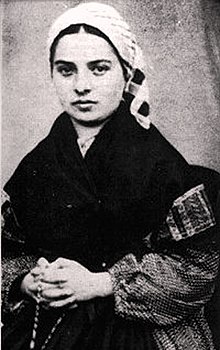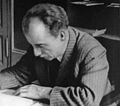Republican Senator Ben Sasse comes out swinging at Donald Trump, lays groundwork for impeachment I'm trying to make this work. This will probably make her face really large in the initial post.
I'm trying to make this work. This will probably make her face really large in the initial post.
The White Rose (German: die Weiße Rose) was a non-violent, intellectual resistance group in Nazi Germany led by a group of students and a professor at the University of Munich. The group conducted an anonymous leaflet and graffiti campaign which called for active opposition to the Nazi regime. Their activities started in Munich on June 27th, 1942, and ended with the arrest of the core group by the Gestapo on February 18th, 1943.[1]
The group wrote, printed and initially distributed their pamphlets in the greater Munich region. Later on, secret carriers brought copies to other cities, mostly in the southern parts of Germany. In total, the White Rose authored six leaflets, which were multiplied and spread, in a total of about 15,000 copies. They denounced the Nazi regime's crimes and oppression, and called for resistance. In their second leaflet, they openly denounced the persecution and mass murder of the Jews. By the time of their arrest, the members of the White Rose were just about to establish contacts with other German resistance groups like the Kreisau Circle or the Schulze-Boysen/Harnack group of the Red Orchestra. Today, the White Rose is well-known both within Germany and worldwide.
They were supported by other people, including Traute Lafrenz, Katharina Schüddekopf, Lieselotte (Lilo) Berndl, Jürgen Wittenstein, Marie-Luise Jahn, Falk Harnack, Hubert Furtwängler, Wilhelm Geyer, Manfred Eickemeyer, Josef Söhngen, Heinrich Guter, Heinrich Bollinger, Helmut Bauer, Harald Dohrn, Hans Conrad Leipelt, Gisela Schertling, Rudi Alt[2] and Wolfgang Jaeger.[3] Most were in their early twenties. Wilhelm Geyer taught Alexander Schmorell how to make the tin templates used in the graffiti campaign. Eugen Grimminger of Stuttgart funded their operations. Grimminger's secretary Tilly Hahn contributed her own funds to the cause, and acted as go-between for Grimminger and the group in Munich. She frequently carried supplies such as envelopes, paper, and an additional duplicating machine from Stuttgart to Munich. In addition, a group of students in the city of Ulm distributed a number of the group's leaflets. Among this group were Sophie Scholl's childhood friend Susanne Hirzel and her teenage brother Hans Hirzel and Franz J. Müller.[4]
The White Rose (German: die Weiße Rose) was a non-violent, intellectual resistance group in Nazi Germany led by a group of students and a professor at the University of Munich. The group conducted an anonymous leaflet and graffiti campaign which called for active opposition to the Nazi regime. Their activities started in Munich on June 27th, 1942, and ended with the arrest of the core group by the Gestapo on February 18th, 1943.[1]
They, as well as other members and supporters of the group who carried on distributing the pamphlets, faced show trials by the Nazi People's Court (Volksgerichtshof), and many of them were sentenced to death or imprisonment.
The group wrote, printed and initially distributed their pamphlets in the greater Munich region. Later on, secret carriers brought copies to other cities, mostly in the southern parts of Germany. In total, the White Rose authored six leaflets, which were multiplied and spread, in a total of about 15,000 copies. They denounced the Nazi regime's crimes and oppression, and called for resistance. In their second leaflet, they openly denounced the persecution and mass murder of the Jews. By the time of their arrest, the members of the White Rose were just about to establish contacts with other German resistance groups like the Kreisau Circle or the Schulze-Boysen/Harnack group of the Red Orchestra. Today, the White Rose is well-known both within Germany and worldwide.
Contents
- 1 Members and supporters
- 2 Historical and intellectual background
- 3 Origin of the name
- 4 Actions: The leaflets and graffiti
- 5 Capture, Gestapo interrogation and trial
- 6 Reactions in Germany and abroad during World War II
- 7 Research history
- 8 Commemoration
- 9 In the media
- 10 Primary sources
- 11 Quotations
- 12 See also
- 13 References
- 14 Further reading
- 15 External links
Members and supporters
Students from the University of Munich comprised the core of the White Rose: the siblings Hans Scholl and Sophie Scholl, Alexander Schmorell, Willi Graf, Christoph Probst, and Kurt Huber, a professor of philosophy and musicology.They were supported by other people, including Traute Lafrenz, Katharina Schüddekopf, Lieselotte (Lilo) Berndl, Jürgen Wittenstein, Marie-Luise Jahn, Falk Harnack, Hubert Furtwängler, Wilhelm Geyer, Manfred Eickemeyer, Josef Söhngen, Heinrich Guter, Heinrich Bollinger, Helmut Bauer, Harald Dohrn, Hans Conrad Leipelt, Gisela Schertling, Rudi Alt[2] and Wolfgang Jaeger.[3] Most were in their early twenties. Wilhelm Geyer taught Alexander Schmorell how to make the tin templates used in the graffiti campaign. Eugen Grimminger of Stuttgart funded their operations. Grimminger's secretary Tilly Hahn contributed her own funds to the cause, and acted as go-between for Grimminger and the group in Munich. She frequently carried supplies such as envelopes, paper, and an additional duplicating machine from Stuttgart to Munich. In addition, a group of students in the city of Ulm distributed a number of the group's leaflets. Among this group were Sophie Scholl's childhood friend Susanne Hirzel and her teenage brother Hans Hirzel and Franz J. Müller.[4]
-
Lilo Ramdohr at the registry office with Carl G. Fürst in Munich, February 1944
Historical and intellectual background
Germany in 1942/1943
White Rose survivor Jürgen Wittenstein described what it was like for ordinary Germans to live in Nazi Germany:"The government – or rather, the party – controlled everything: the news media, arms, police, the armed forces, the judiciary system, communications, travel, all levels of education from kindergarten to universities, all cultural and religious institutions. Political indoctrination started at a very early age, and continued by means of the Hitler Youth with the ultimate goal of complete mind control. Children were exhorted in school to denounce even their own parents for derogatory remarks about Hitler or Nazi ideology."The activities of the White Rose started by the end of 1942. This was a time which was particularly critical for the Nazi regime: After initial victories in World War II, the German population became increasingly aware of the losses and damages of the war. In Summer 1942, the German Wehrmacht was preparing a new military campaign in the southern part of the East front in order to regain the initiative after their earlier defeat close to Moscow. In February 1943, the advance of the German army had come to a halt at the Eastern front, and faced a major defeat in the Battle of Stalingrad. During this time, the authors of the pamphlets could neither be discovered, nor could the campaign be stopped by the Nazi authorities. When Hans and Sophie Scholl were discovered and arrested whilst distributing leaflets at Ludwig Maximilian University of Munich,[1] the regime reacted brutally. As the "Volksgerichtshof" was not bound to the law, but led by Nazi ideology, its actions were declared unlawful in post-war Germany. Thus, the execution of the White Rose group members, amongst many others, is considered as judicial murder.[6]
— George J. Wittenstein, M. D.,"Memories of the White Rose", 1979[5]





Comments
Post a Comment